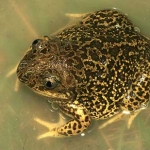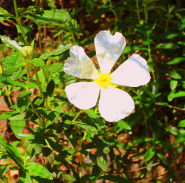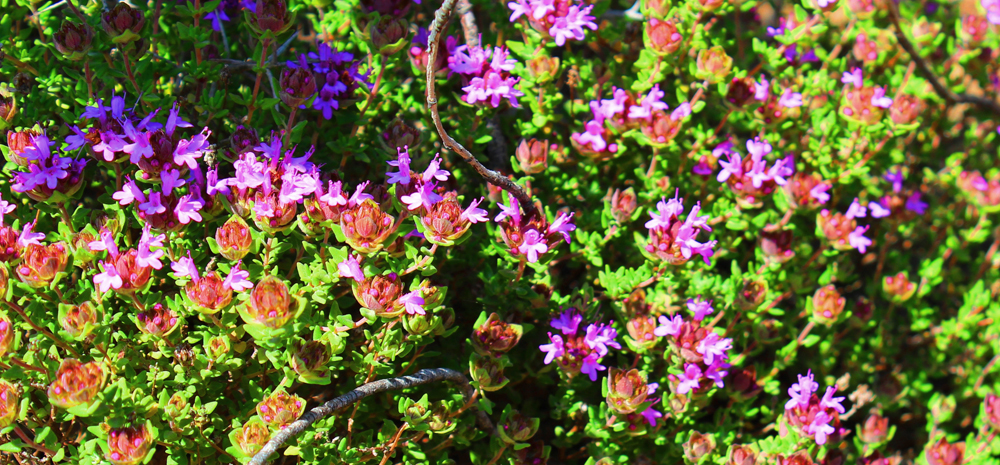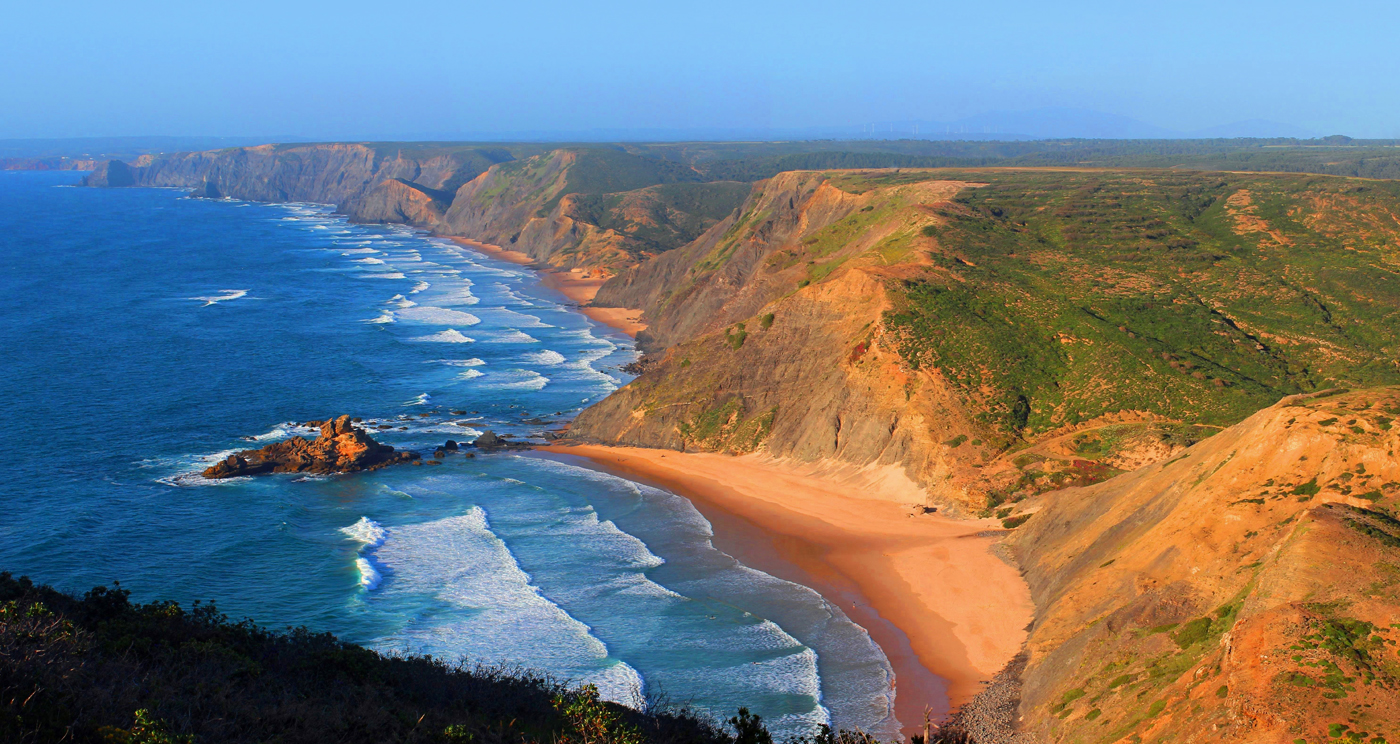• Black Kite (Milvus migrans) Aug.-Sep. 2)
• Egyptian Vulture (Neophron percnopterus) Sep. -Oct. 3)
• Red-billed Chough (Pyrrhocorax pyrrhocorax) resident 4)
• Alpine Swift (Tachymarptis melba) Mar.-Sep. 5)
• Blue Rock-thrush (Monticola solitarius) resident 6)
• Alpine Accentor (Prunella collaris) Oct.-Mar. 7)
• Spectacled Warbler (Sylvia conspicillata) Mar.-Nov. 8)
• Ortolan Bunting (Emberiza hortulana) Aug.-Sep. 9)
• Zitting Cisticola (Cisticola juncidis) resident 10)
• Booted Eagle (Hieraaetus pennatus) Sep. -Oct.
• Little Bustard (Tetrax tetrax) resident
• Tawny Pipit (Anthus campestris) Sep.-Oct.;
• Richard’s Pipit (Anthus richardi) Oct.-Dec.;
• Southern Grey Shrike (Lanius meridionalis) resident
• Pallid Swift (Apus pallidus) Mar.-Oct.
• Thekla Lark (Galerida theklae) resident
• Golden Oriole (Oriolus oriolus) April-September
• Black-eared Wheatear (Oenanthe hispanica) Mar.-Sep.
* Birds of prey and steppic species are best seen in the vicinity of Cape St. Vincent – please check Birding Hotspots

PLEASE NOTE: this list is not extensive;
• Black Redstart: Phoenicurus ochruros —-• Common Scoter: Melanitta nigra —-• Common Cuckoo: Cuculus canorus —-• Dartford Warbler: Sylvia undata —-• Eurasian Crag Martin: Ptyonoprogne rupestris —-• Eurasian Jackdaw: Corvus monedula —-• Eurasian Jay: Garrulus glandarius —-• European Honey-buzzard: Pernis apivorus —-• European Pied Flycatcher: Ficedula hypoleuca —-• European Shag: Phalacrocorax aristotelis —-• European Turtle-dove: Streptopelia turtur —-• Great Skua: Stercorarius skua —-• Great Spotted Woodpecker: Dendrocopos major —-• Hoopoe: Upupa epops —-• Northern Gannet: Morus bassanus —-• Northern Wheatear: Oenanthe oenanthe —-• Peregrine Falcon: Falco peregrinus —-• Razorbill: Alca torda —-• Ring Ouzel: Turdus torquatus —-• Red Kite: Milvus milvus —-• Whinchat: Saxicola rubetra —-• Yellow-legged Gull: Larus michahellis;
 Western Spadefoot (Pelobates cultripes): A near threatened, shy and predominantly nocturnal amphibian, the Western Spadefoot is a large (11 centimetres / 4.33 inches), greenish or brownish mottled toad, that uses the ‘spade’ (callus) located in the hind legs to quickly excavate burrows where it hides during the daylight hours. This toad is only found in parts of southern France, Spain and Portugal. In western Algarve the species uses small temporary ponds as a favourite micro-habitat during the breeding season, a time when it becomes partially diurnal. The Costa Vicentina Natural Park is one of the largest wildlife refuges for this species in Portugal. Image: Jean-Laurent HentzJean
Western Spadefoot (Pelobates cultripes): A near threatened, shy and predominantly nocturnal amphibian, the Western Spadefoot is a large (11 centimetres / 4.33 inches), greenish or brownish mottled toad, that uses the ‘spade’ (callus) located in the hind legs to quickly excavate burrows where it hides during the daylight hours. This toad is only found in parts of southern France, Spain and Portugal. In western Algarve the species uses small temporary ponds as a favourite micro-habitat during the breeding season, a time when it becomes partially diurnal. The Costa Vicentina Natural Park is one of the largest wildlife refuges for this species in Portugal. Image: Jean-Laurent HentzJean
 The Vicentine Coast Natural Park (see more about this park here) is located at the confluence of three great ‘bioregions’, so it is no wonder to find within its boundaries a remarkable fusion of North African, Mediterranean and North Atlantic plant species. However, despite facing the Atlantic – just like the rest of the Algarve – a typically Mediterranean plant cover still dominates. Throughout the Vicentine Coast there are about 750 different plant species. More than 100 of them are rare, highly localized or endemic, and 12 of them do not exist anywhere else on Earth. Notable examples are Cistus palhinhae, Plantago almogravensis, Diplotaxis vicentina, Hyacinthoides vicentina, Biscutella vicentina and Centaurea vicentina. Pictured right is Cistus palhinhae, a threatened species of rockrose that occupies a diminutive natural range across the Natural Park. Habitat degradation and increasingly frequent forest fires are major negative trends affecting this southern Portuguese endemism. Despite its high tolerance to extreme natural conditions, this plant favours very specific ecological niches (such as compact alkaline soils and rock fissures) where it doesn’t have to compete with more adaptable and competitive species. The image below depicts yet another Portuguese endemism, a fragrant species of thyme (Thymus camphoratus) that thrives along the Vicentine Coast. Its flowers can be seen between March and June.
The Vicentine Coast Natural Park (see more about this park here) is located at the confluence of three great ‘bioregions’, so it is no wonder to find within its boundaries a remarkable fusion of North African, Mediterranean and North Atlantic plant species. However, despite facing the Atlantic – just like the rest of the Algarve – a typically Mediterranean plant cover still dominates. Throughout the Vicentine Coast there are about 750 different plant species. More than 100 of them are rare, highly localized or endemic, and 12 of them do not exist anywhere else on Earth. Notable examples are Cistus palhinhae, Plantago almogravensis, Diplotaxis vicentina, Hyacinthoides vicentina, Biscutella vicentina and Centaurea vicentina. Pictured right is Cistus palhinhae, a threatened species of rockrose that occupies a diminutive natural range across the Natural Park. Habitat degradation and increasingly frequent forest fires are major negative trends affecting this southern Portuguese endemism. Despite its high tolerance to extreme natural conditions, this plant favours very specific ecological niches (such as compact alkaline soils and rock fissures) where it doesn’t have to compete with more adaptable and competitive species. The image below depicts yet another Portuguese endemism, a fragrant species of thyme (Thymus camphoratus) that thrives along the Vicentine Coast. Its flowers can be seen between March and June.
